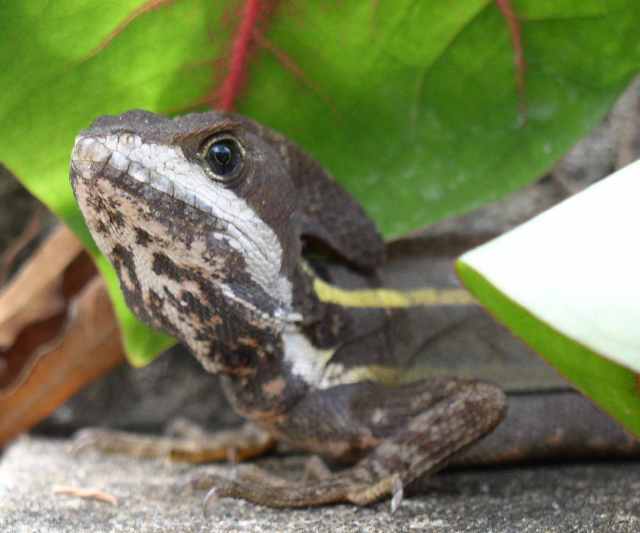|
| 질의: Snake fish | 결과: 86번째/283 | |
Brown Basilisk (Basiliscus vittatus) - Wiki
| 제목: | Brown Basilisk (Basiliscus vittatus) - Wiki
| |

| 해상도: 640x533
파일크기: 38918 Bytes
촬영일: 0000:00:00 00:00:00
사진기: C4100Z,C4000Z (OLYMPUS OPTICAL CO.,LTD)
F number: f/2.8
Exposure: 10/1600 sec
Focal Length: 191/10
등록시간: 2007:10:25 14:49:29
|
Brown basilisk
From Wikipedia, the free encyclopedia
[Photo] Brown Basilisk (Basiliscus vittatus). Striped basilisk lizard, also known as a "Jesus Christ lizard" in the Belizian jungle. Uploaded to en-wikipedia by http://en.wikipedia.org/wiki/User:Belizian on 8 February 2004, and he released it under GFDL. | Permission is granted to copy, distribute and/or modify this document under the terms of the GNU Free Documentation License, Version 1.2 or any later version published by the Free Software Foundation; with no Invariant Sections, no Front-Cover Texts, and no Back-Cover Texts. A copy of the license is included in the section entitled "GNU Free Documentation License". |
The Brown basilisk or Striped basilisk (Basiliscus vittatus; in some areas referred to as "common basilisk") is one species of basilisk lizard. They are native to Central America, but have been introduced into the wild in the U.S. state of Florida.
Along with the Common Basilisk they have the nickname "Jesus Lizard" because when fleeing from a predator, they are very fast and can even run on top of the water. Basilisks actually have large hind feet with flaps of skin between each toe. The fact that they move quickly across the water, aided by their web-like feet, gives them the appearance of "walking on water". Smaller basilisks can run about 10-20 meters on the water without sinking. Young basilisks can usually run farther than older ones. If the animal faces danger, it starts to run very fast on the surface of a river or a lake. Then the flaps on its hind feet are opened and thus more surface area is provided for it to run on water.
Species - Basiliscus basiliscus. Family - Iguanidae. Location - Central and South American rainforests. Near rivers and streams. Size - 2 & 1/2 feet long including the tail. Diet - Insects, small invertebrates, flowers, and small vertebrates (like snakes, birds, and fish). They store fat in their tail. Enemies - Large birds of prey, snakes, fish, other large reptiles, and mammals. This animal is not endangered.
They are in the same infraorder as the iguana family. Like most reptiles, basilisks are active during the day. They have long toes and sharp claws. Most are under a foot in length, but some may grow up to two feet. Basilisks usually weigh between 200-600 grams. Their maximum lifespan is probably around 7-8 years. In the wild, most die much sooner. Females lay about 2-18 eggs, five to eight times a year. Eggs hatch after about three months and the babies weigh about 2 grams. Their outstanding camouflage allows them to remain motionless and very hard to detect.
http://en.wikipedia.org/wiki/Brown_basilisk
| The text in this page is based on the copyrighted Wikipedia article shown in above URL. It is used under the GNU Free Documentation License. You may redistribute it, verbatim or modified, providing that you comply with the terms of the GFDL. |
|
^o^
동물그림창고 똑똑전화 누리집
^o^
|
|

